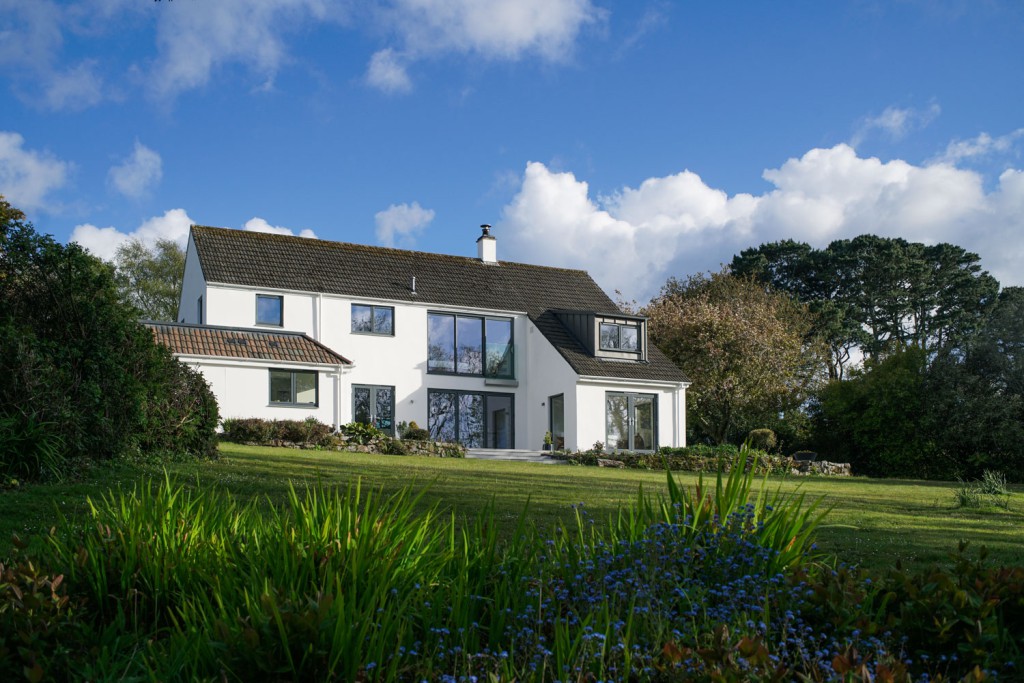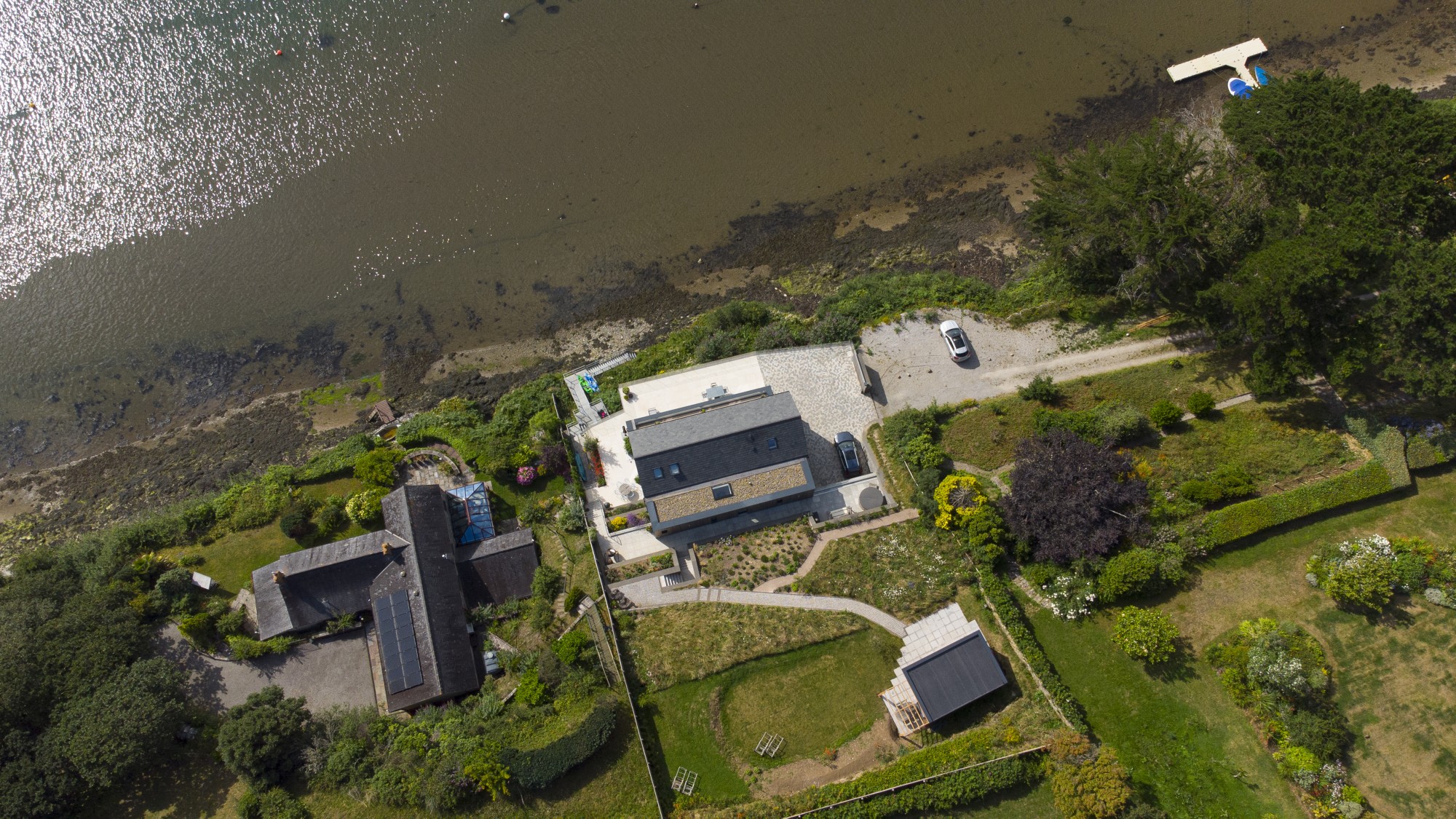It’s worth spending some time thinking about your garden really early on in the design and build process. Getting things in the plans before the construction team even gets on site can save you time, money and headaches later. These are also the kind of questions a garden designer will want to talk through with you, if you decide it’s a bit too big for you to manage by yourself.
Share:
These are our Top Tips for getting the garden you want, with as little fuss as possible
Before we start, bear in mind that you’re on a Design & Build website. We’re not garden designers, so this article is written from the perspective of ‘things we wish people knew’ and ‘mistakes we’ve seen made’, as well as the gardens we’ve watched take shape and become beautiful oases for the families in some of the homes we’ve designed and built.
We’re not the experts on plants – there are no actual plants named in this entire article. However, there are lots of places we can steer you to, which can give you that information. This is our take on designing a garden, with support from some clever friends.

1. Work out what you’ve got already
Look at the slope, where the sun travels through, what established trees, water features and outbuildings are already there – and whether you want to keep them, lose them or adjust them. Check for sightlines, into your garden, and from it into others’ spaces or footpaths, roads, etc.
Investigate the soil conditions, and drainage – very boring, but on a slope, you might find that creating a terrace, or building retaining walls is the best way to prevent your garden sliding downhill, or turning into a marsh for three months of the year. Draw a plan with all of this information on it, before you do anything else.
2. Think about who will be using the garden, and what for

Will you have small children wanting to run around and have play equipment? Do you anticipate large parties, needing fixed or movable seating, and maybe an outdoor kitchen or barbeque area?
Is wildlife important to you, meaning wilder areas, bird boxes, space for hedgehogs, and so on? Is a huge veg patch your dream, needing a greenhouse, a potting shed, and raised beds? Will you want a compost heap?
3. Think about structures and buildings
If you’re intending to have a home office in your garden, a hot tub, or an outdoor kitchen area, planning where that will go, and getting the electricity and plumbing sorted out while the house itself is being built is definitely the easiest route to take.
Will you want your outdoor entertaining space to flow seamlessly from your indoor space, or be elsewhere in the garden?
Does your office need to be as far away from everyone else as you can make it?
Where is the best place to site a greenhouse?
If a lush lawn is part of your dream, make sure you consider storage for a lawnmower suitable for maintaining it.
If you want a water feature, getting this dug, if necessary, and appropriate water and electricity added early on is helpful.
4. Gather your inspiration
This is the point where you start thinking about style, and the look and feel of your garden. As you have probably done with your home, pull together photos and ideas, whether that’s magazine cuttings, photos from your visits to other gardens, or Pinterest. You might like the vibe of a certain image but prefer the colours of another – bring it all to the table. If you decide to bring in a garden designer, they will need to see all of this, and probably talk it all through with you.
5. What hard landscaping will you need?

Consider decks and patio areas as well as paths and driveways, to make entertaining spaces, and the routes between the spaces you’re planning. Placing built-in seating areas and raised beds around a deck can create a very elegant space for parties, or do you want a relaxed nook for summer brunches, tucked under a rose arch? Curves are more interesting than blocks, when thinking about paths, and lawn shapes.
Plan lighting at this point as well, so that it can be wired into the hard landscaping, whether uplighters, floor- or wall-set accent lights, old fashioned street lights, external security lights, or solar pathway lights – there are so many options!
Once you actually get to building the garden, putting paths in where you need them can help avoid trailing mud everywhere, but make sure that the heavy plant has left the site before you install your beautiful tiles.
6. Think in four dimensions

Yes, four. Planning a garden to account for ‘up’ as well as side to side will give visual interest. Think trees, climbing plants, trellises and arches, and maybe fences between different sections, or whether you can grow something up the walls of any outbuildings.
And the fourth dimension – time. Consider the seasons for starters, and plan for interest all through the year. Also remember that this garden will grow, and in a decade, the things you’ve planted will be much larger. You can buy in established trees and shrubs to give instant impact, but also bear in mind that all your plants will get wider as well as taller.
It’s also worth staining or painting fences and walls before your plants go in – and choose colours that will show off what you’re planting.
7. How much time do you have?

Are you intending to spend every spare minute in this garden, lovingly tending it, and enjoying every second? Are you looking for a garden that will more or less look after itself, either because you’re too busy to maintain a time-hungry garden, or this is a holiday property, and you’re not here often enough to go full Alan Titchmarsh on it? Or are you somewhere in between…
The other option is a regular professional gardening service, that will help you have a garden that fits your needs, and can put in more time than you have available.
8. Style is important
If your home is a classic cottage, or converted barn, then the style of garden that will suit it is very different from a very modern building. English Cottage Garden, low-maintenance desert-inspired seaside planting, wild meadow, and a veg patch Mr McGregor would be envious of can all fit happily into the same garden, if you have space, but you’ll need to plan the path through the space carefully, to avoid it looking like you couldn’t make your mind up what you wanted.
9. Plants – can we think about the plants yet?
Yes. You can think about plants now!
Start by having a good look at your neighbours’ gardens (without looking like a stalker) to find out what flourishes in your part of the world. Consider the light conditions, soil conditions, drainage, and the time you have to put in. Work out what colours and styles float your boat, and whether you’re looking to make a feature of shape, scent or texture of leaves.
If you’ve brought plants from a previous home, then working out where they go, and what they’ll be with, is your first step, then fit in other things round them. You might also find that you have bulbs buried around the place, and other surprises, once the spring comes. Think about balance, as well, to ensure that you have interesting things going on across the whole garden, rather than a busy corner and an empty space.

10. Making it happen
The first steps, once you actually come to building your garden (and assuming you have the outbuildings plumbed in and connected to the mains, is the big stuff: paths, trees, fencing. Making a usable space is more important than getting the accessories and all the plants in at the very start. You’ll want to match the planting with the time of year – lawns go in best in April and October, whether turf or seed, for example – and many plants will be happiest if put in in spring or autumn.
So that’s our top ten. We hope it’s useful to you.





